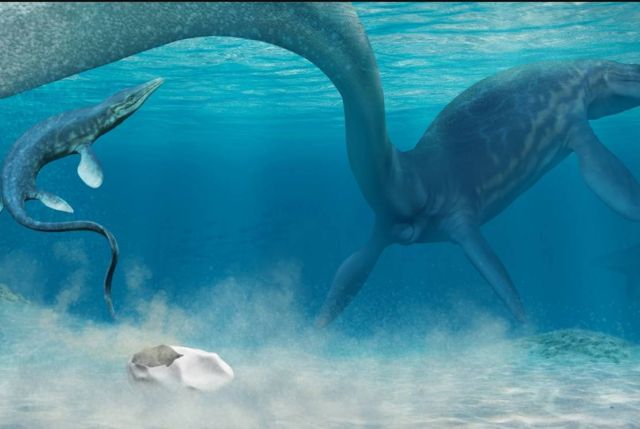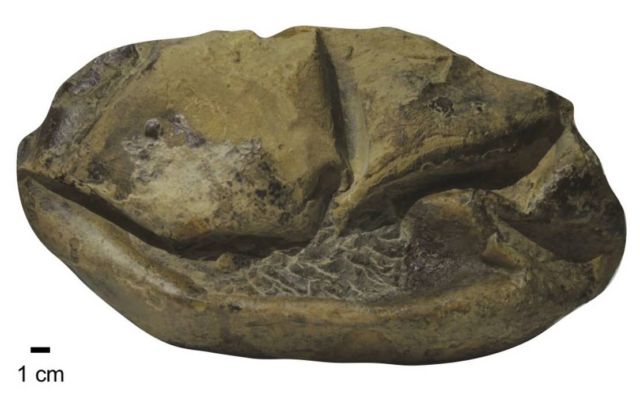66 million year old world’s biggest reptile egg from a prehistoric sea monster, unearthed in Antarctica
Researchers say the egg was first unearthed on the Antarctic Peninsular back in 2011, remained unlabelled for a decade at Chile’s National Museum of Natural History, until Texas University scientists realized it looked like a ‘soft lizard shell.’
Above: Artist’s reconstruction showing a mosasaur mother depositing a soft-shelled egg on the seafloor. Illustration: Francisco Hueichaleo
An analysis led by researchers at The University of Texas at Austin has found that the fossil is a giant, soft-shell egg from about 66 million years ago. Measuring in at more than 11 by 7 inches, the egg is the largest soft-shell egg ever discovered and the second-largest egg of any known animal.
A side view of the fossil of the giant egg. Credit: Legendre et al. 2020
The specimen is the first fossil egg found in Antarctica and pushes the limits of how big scientists thought soft-shell eggs could grow. Aside from its astounding size, the fossil is significant because scientists think it was laid by an extinct, giant marine reptile, such as a mosasaur — a discovery that challenges the prevailing thought that such creatures did not lay eggs.
“It is from an animal the size of a large dinosaur, but it is completely unlike a dinosaur egg,” said lead author Lucas Legendre, a postdoctoral researcher at UT Austin’s Jackson School of Geosciences. “It is most similar to the eggs of lizards and snakes, but it is from a truly giant relative of these animals.”
A study describing the fossil egg was published in Nature on June 17.
source University of Texas at Austin







Leave A Comment